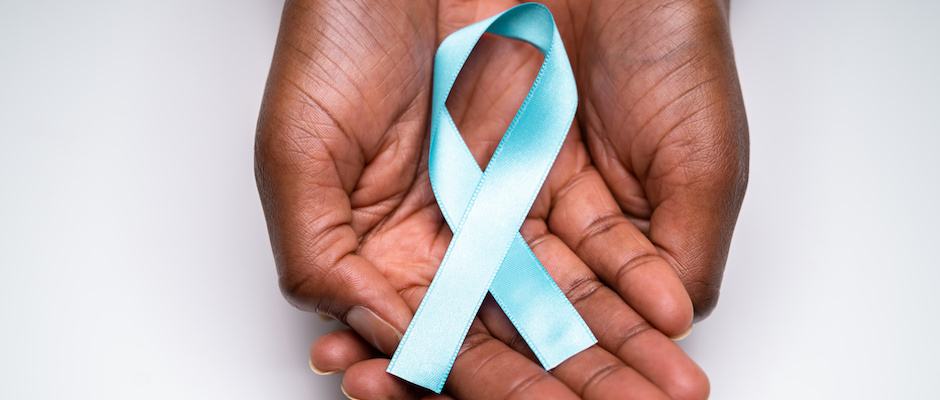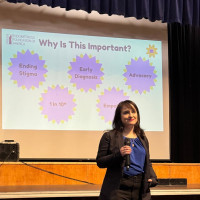
Cervical cancer is the fourth most common cancer among women. According to the World Health Organization, 99% of cervical cancer cases are caused by a high-risk HPV (human papillomavirus) infection, which is commonly transmitted through sexual contact. But perhaps the most dangerous thing about cervical cancer is that it does not have the early symptoms associated with other kinds of cancer, and when symptoms do surface, it can easily be mistaken for premenstrual syndrome (PMS) or even urinary tract infection (UTI).
“Before my cervical cancer screening,” says Thelma*, a 32-year old Nigerian woman, who was diagnosed with cervical cancer in 2019, “I had unusual bleeding even when I was not on my period. I had polycystic ovarian syndrome (PCOS) at the time, so I chalked it down to a side effect of the hormonal treatment I was taking to regulate ovulation. But in January 2019, a medical nonprofit was carrying out free cervical cancer screening, and I decided to conduct one on a whim.” Thelma’s pap smear test detected abnormal cells in her cervix. “I got scheduled for a colposcopic examination and later a biopsy,” she says. Luckily, Thelma’s cancer was still at its early stages and she had surgery done to remove the cancer. “I probably would not have known if I had not gotten tested,” she says.
Most discussions about preventive measures for cervical cancer center on annual screening which includes a pap smear and HPV test. But, for a lot of women like Thelma, this is almost impossible. This is largely because in spite of numerous campaigns, including the World Health Organization’s campaign on cervical cancer in Africa, a lot of women are still largely ignorant of the importance of testing. For example, in Nigeria, which accounts for about half of cervical cancer cases in West Africa, little to no screening structure exists, as there is a lack of effective screening programs aimed at detection and treatment for precancerous conditions. Women have to fund these screenings themselves or rely on medical nonprofits and charity organizations.
Quinta Health, one such organization in Nigeria, started operations in 2017 and offers free cervical cancer screening services for women from low-income communities.
“When I was a medical student,” says Dr. Adewumi Babatunde (MBBS), the CEO of Quinta Health and Resident in Public Health, “a close friend lost her mum to cervical cancer. My friend’s mum was in excruciating pain until she died. But, I understood that cervical cancer could be treated upon early detection, so I set out to ensure no woman has to go through such an experience. I do this by community awareness, engagement, and screening”
Quinta Health has screened about 6,000 women so far in Nigeria, and Babatunde says although there have been no cases of cervical cancer, there have been discoveries of cervical dysplasia. These women, he adds, have undergone treatment.
These types of interventions continue to lessen the impact of cervical cancer in developing countries. But even that is sometimes not enough. According to research published in the Western Journal of Medicine in 2000, 80% of cervical cancer cases occur in developing countries and is the leading cause of death from cancer among women in those countries. In a later report from 2008, an estimated 85% of cervical cancer cases were linked to developing countries.
In the United States, the American Cancer Society estimates that about 14,100 new cases of cervical cancer will be diagnosed in 2022 and about 4,280 women will die from cervical cancer. This, according to the Center for Disease Control (CDC), is because women are not screening enough. Reasons for women not screening with enough consistency include household income, access to health insurance, and race. According to the CDC, women who had undergone screening for cervical cancer had higher incomes and were most likely to have health insurance than women who had not undergone screening.
In the UK, where cervical cancer accounts for 1% of cancer deaths among women, women are invited up to six months before their 25th birthdays for a cervical screening, then again every three years between 25-49 years old, and, once more, every five years between 50-64 years old.
Even in countries that offer more robust cervical cancer screening processes, women’s experiences with the screenings differ on a wide scale: some women experience slight discomfort, some spot and experience vaginal discharges, while others go through excruciating pain.
“I was invited six months before my 25th birthday to book an appointment for a pap smear test,” says Bea*, who lives in the UK, “but I had just concluded my period by the time my appointment was booked, so I was asked to come back the next week.” In preparing for a pap smear or HPV test, women should take note that they are not on, about to be, or just recently concluded their period. According to research, if a test is scheduled within the next two days, women should also not have sex, use a medicine or cream in their vagina, wear a tampon, and douche or rinse the vagina with water or any other fluid.
“I went back to the clinic the next week for my test,” Bea continues, “but the sample was still stained with some blood residue.” What struck Bea the most, she says, was how evasive the procedure was. “First, the nurse didn’t give me any choices or ask any questions. After instructing me on how to position my legs, she stepped out of the room for a minute to give me time to prepare. I couldn’t see anything during the whole procedure, but I felt the speculum go in. I felt her open me up, and felt her brush my cervix as she tried to get a sample.”
The procedure was an extremely painful one for Bea, who experienced heavy vaginal discharge afterwards. And when she discussed the pain and discomfort she felt with her friends, they chalked it down to her being sexually inactive. The results came out inconclusive due to the blood residue, so another test was scheduled for the following week.
“The week after was just as painful,” Bea explains. “But the nurse was a bit more considerate this time. It was also fast. We were done before I even had time to process the pain.”
Bea, who was diagnosed with fibroids later that year, said she had hoped the screening would shed more light on her already-developing symptoms at the time.
“I didn’t know I had fibroids at the time of my cervical screening, but the test and all other issues I’ve had with my reproductive system afterwards shows how invasive matters concerning women’s health are. The common theme is – your legs up in the air, wide open while someone pokes around down there.”
In addition, Bea says that healthcare workers are sometimes dismissive of women’s discomfort and trauma when it comes to these kinds of tests. And even though the nurse who had done her tests had explained the process to her, what she had been told was very watered down.
“The procedure is simply not taken as seriously or as traumatic as it actually is,” she says, “And while I understand that healthcare workers are trying to encourage women to get tested as regularly as they should, giving full and unbridled explanations on the procedure and what it feels like for different women allows people to know what to expect. Women need to be told clearly what to expect from these screenings.”
Some women, like Bea’s friends, for example, have found cervical cancer screenings to be free of pain. Some experience a slight discomfort.
“During my screenings,” says Jess*, a 30-year old woman who’s had two cervical tests done, “I experienced just slight discomfort and a little bit of pressure from an alien object going inside my body, but it wasn’t really distressing.”
Some other women experience just a mild pain, and spotting afterwards.
“When the nurse opened me up and held it open while she tried to get a sample,” says Kemi*, a 26-year old woman in Canada, who has been screened once, “I experienced mild pain. [The nurse] explained that this was common, but when I started spotting after the tests, I panicked a bit. Apparently, that was normal, too.” It is important for patients and healthcare workers to understand that every woman going in for a screening may have a different subset of other gynecological realities, and that their experience does not exist as a monolith. The more informative and communicative we are about women’s health as a whole, the more we can increase access to cervical cancer as a whole, as well as reduce the fear and distrust that some women may have when they’re being screened.









